Achieving sustained growth is a challenge every startup aspires to tackle. For startups, navigating the complexities of scaling a business requires more than just an innovative product or service—it demands a well-thought-out business growth plan that aligns with the company’s vision and resources.
Whether it’s entering new markets, increasing market share, or improving customer acquisition, a strong growth strategy is the key to long-term success.
This blog explores proven growth strategies to help startups thrive. From market penetration tactics to strategic partnerships, we’ll walk you through actionable insights backed by examples of successful companies.

What is a Business Growth Strategy?
Definition and Importance of a Growth Strategy
A business growth strategy is a structured plan that guides an organization’s efforts to grow revenue, expand customer bases, and achieve long-term sustainability.
Growth strategies encompass a range of tactics, such as increasing market penetration, launching new products, or entering new markets. But the key is execution—an effective growth strategy relies on precision planning and alignment with a business’s unique goals.
Why is it important? For startups, growth strategies provide a roadmap to scale, helping them focus their resources on the most impactful initiatives while navigating market complexities.
Types of Growth Strategies
Different companies are at different stages of their growth cycle, and no one-size-fits-all strategy exists. Popular approaches include:
Market Penetration
Targeting existing customers to buy more, more frequently, or both.
Strategies include lowering prices, expanding product offerings, or enhancing marketing efforts.
Market Development
Identifying and entering new geographic regions or untapped demographic segments for your product or service.
Organic Growth
Leveraging internal resources and capabilities to expand operations or introduce new services/products without external acquisitions.
Growth strategy examples can illustrate how specific tactics lead to significant business growth. By applying a structured approach to the customer lifecycle, companies can learn from real-world examples of businesses that have benefited from targeted strategies.
Understanding your startup’s position in the business lifecycle can help identify the strategy that aligns most closely with your goals.

Types of Business Growth
Organic Growth Through Internal Development
Organic growth refers to scaling a business using its own capabilities and operations—without third-party involvement. It’s sustainable over the long term and builds a strong foundation for long-lasting success.
Example: Improving existing production processes can increase output without incurring the cost of new infrastructure or acquisitions.
Strategic Growth Through Partnerships and Acquisitions
Strategic growth initiatives often involve partnerships or acquisitions to accelerate the process. Acquiring companies can provide startups with access to new markets, technologies, or products in a short timeframe.
Example: Procter & Gamble’s acquisition of smaller brands allowed it to expand into different markets while reducing risks and leveraging existing distribution capabilities.

Market Penetration Strategy
Increasing Market Share Through Pricing and Marketing
Market penetration focuses on boosting sales within your current market through a well-crafted marketing strategy. Strategies like competitive pricing and innovative marketing campaigns are common.
Tactics Include:
Offering discounts or product bundles.
Revamping marketing efforts, such as launching targeted email campaigns or running social media ads.
Expanding Product Offerings to Attract New Customers
Innovating or refining existing products can give businesses an edge in their market. Updated product development strategies help companies meet changing customer demands while staying ahead of trends.
Example: Fast-fashion retailers like ASOS have expanded their offerings beyond clothing by launching beauty and homeware products, attracting a broader customer base.

Growth Strategies for Expansion
Revenue Growth Strategy
Increasing revenue is the cornerstone of any growth strategy. This involves not just selling more but optimizing pricing models, bundling services, and ensuring forecasts lead to actionable insights.
Example: Leveraging advanced sales forecasting tools to identify monthly trends and adjust production cycles effectively.
Customer Growth Strategy
Acquiring new customers and retaining existing ones are both essential for growth. Keeping churn rates low while calculating customer lifetime value (LTV) ensures better ROI on acquisition efforts.
Best Practices Include:
Tracking customer engagement and churn metrics.
Crafting personalized marketing strategies targeted at specific customer segments.
Market Development Strategies
Market expansion involves expanding into new geographies, industries, or target demographics.
Example: Restaurant delivery apps entering suburban or rural areas enable them to tap into regions where competition may be lower.

Product Development and Diversification
Creating New Products for New and Existing Audiences
Launching new product lines or improving existing goods ensures that companies stay relevant. Diversification also helps mitigate risks associated with market saturation or shifting consumer preferences.
Example: Apple diversified its product portfolio by launching the Apple Watch, catering to a new user base seeking wearable tech solutions.
Improving Existing Products to Increase Customer Satisfaction
Improving existing products is a crucial aspect of a business growth strategy. By enhancing the features, quality, and user experience of existing products, businesses can increase customer satisfaction, loyalty, and retention. This, in turn, can lead to positive word-of-mouth, online reviews, and referrals, ultimately driving business growth.
To improve existing products, businesses can conduct market research to identify areas for improvement, gather customer feedback, and analyze industry trends. They can also invest in research and development to create new features, upgrade existing ones, and enhance the overall user experience.
For example, a software company can improve its existing product by adding new features, enhancing the user interface, and increasing the speed and efficiency of the software. This can lead to increased customer satisfaction, reduced churn rates, and positive reviews, ultimately driving business growth.
Strategic Partnerships and Acquisitions
Collaborating with or acquiring other companies can give access to new resources, customers, or technologies.
A marketing growth strategy is a comprehensive plan aimed at expanding an organization’s total addressable market (TAM) and increasing its market share by researching various customer segments and potential market expansions.
Example: LinkedIn grew exponentially by acquiring Lynda.com, a leading online learning platform, allowing it to provide more value to its user base.
Forming Partnerships to Access New Markets or Technologies
Forming partnerships is a strategic growth initiative that can help businesses access new markets, technologies, or customer segments. By partnering with other businesses, organizations can leverage each other’s strengths, expertise, and resources to drive growth.
There are various types of partnerships, including strategic partnerships, joint ventures, and collaborations. Strategic partnerships involve partnering with complementary businesses to access new markets, technologies, or customer segments. Joint ventures involve creating a new entity with a partner to pursue a specific business opportunity. Collaborations involve working with partners on a specific project or initiative.
For example, a technology company can partner with a leading industry player to access new markets, technologies, or customer segments. This partnership can help the company expand its product offerings, increase its market share, and drive business growth.
Acquiring Companies to Expand Product Offerings or Increase Market Share
Acquiring companies is a business growth strategy that involves buying other companies to expand product offerings, increase market share, or gain access to new markets or technologies. Acquisitions can be a quick way to drive business growth, but they require careful planning, execution, and integration.
To acquire companies effectively, businesses need to conduct thorough market research, identify potential targets, and evaluate their financials, products, and market position. They also need to develop a clear integration plan to ensure a smooth transition and minimize disruption to customers and employees.
For example, a leading software company can acquire a smaller company to expand its product offerings, increase its market share, and gain access to new markets or technologies. This acquisition can help the company drive business growth, increase its revenue, and enhance its competitive position.

Leveraging Social Media and Customer Service
Using Social Media to Promote Your Brand
Social media is among the most effective tools for startup marketing. Platforms like Instagram or LinkedIn allow businesses to engage with potential customers creatively while driving visibility.
Tips:
Share behind-the-scenes content to build trust and brand personality.
Leverage paid ads with refined targeting to reach new customer segments.
Delivering Exceptional Customer Experiences
Customer retention is pivotal for growth—a happy customer base often results in referrals, testimonials, and repeat business.
Best Methods:
Use CRM tools to personalize customer interactions.
Proactively request feedback and implement it into your offerings.

Growth Strategy Frameworks and Templates
Using Templates to Streamline Growth Plans
Growth strategy templates ensure organization in planning efforts. These frameworks can help businesses track important metrics and outline actionable steps.
What to include:
Objectives for revenue, customer acquisition, or market share.
Tactical plans for each growth stage.
Key performance indicators (KPIs) to track progress.
Monitoring performance regularly ensures teams stay motivated and aligned.
Examples of Successful Growth Strategies
Zapier drove growth by creating valuable blog content related to other tools.
LinkedIn expanded by encouraging its users to connect with their personal networks.
Airbnb simplified the review process, making users more inclined to leave feedback.

Finding and Seizing Opportunities
Continually Monitoring and Optimizing Performance to Drive Growth
Continually monitoring and optimizing performance is a critical aspect of a business growth strategy. By tracking key performance indicators (KPIs), businesses can identify areas for improvement, optimize their operations, and drive growth.
To monitor and optimize performance, businesses can use data analytics tools, such as Google Analytics, to track website traffic, conversion rates, and customer behavior. They can also use customer feedback tools, such as surveys and reviews, to gather insights into customer satisfaction and preferences.
For example, an e-commerce company can use data analytics tools to track its website traffic, conversion rates, and customer behavior. By analyzing this data, the company can identify areas for improvement, optimize its website and marketing campaigns, and drive business growth.

Examples of Successful Business Growth Strategies
How Companies Like Zapier, LinkedIn, and Airbnb Drove Growth Through Innovative Strategies
Zapier, LinkedIn, and Airbnb are examples of companies that have driven growth through innovative strategies. Zapier, a software company, used content marketing to drive growth, creating a blog that attracted over 600,000 readers in just three years. LinkedIn, a professional networking platform, used an Outlook plugin to invite connections and grow its user base. Airbnb, a home-sharing platform, used a review system to build trust and drive growth.
These companies demonstrate the importance of innovation and experimentation in driving business growth. By trying new approaches, taking risks, and learning from failures, businesses can identify effective growth strategies and drive success.
In conclusion, business growth strategies are critical for driving success in today’s competitive market. By improving existing products, forming partnerships, acquiring companies, and continually monitoring and optimizing performance, businesses can drive growth, increase revenue, and enhance their competitive position.
Identifying Key Areas for Improvement
Startups should evaluate their current operations for bottlenecks or inefficiencies while recognizing untapped potential in their current market.
Pro Tip: Always align new efforts with your North Star Metric, a measure that reflects the most critical outcome for growth.
Implementing Incremental Changes
Even small adjustments can lead to big results. Focusing on specific tactics while monitoring important metrics like sales rates, customer churn, or market share allows companies to measure the effectiveness of their growth strategy.

The Path to Long-Term Success
Developing and implementing an effective growth strategy isn’t just about revenue—it’s about positioning your startup as a leader in its target market and building a sustainable business model. Whether you focus on market penetration, strategic partnerships, or product diversification, remember that growth efforts require constant optimization and alignment with company goals.
Your startup’s growth potential is limitless with the right framework, resources, and mindset. Is your team ready to execute?
Resources for Startup Growth
Here are some valuable resources to help guide your startup’s growth strategy:
Startup Metrics for Entrepreneurs by David Skok – A comprehensive guide to understanding the key metrics that drive growth.
Y Combinator Startup Library – Free resources on topics like fundraising, product-market fit, and scaling from one of the leading startup accelerators.
Growth Hacking 101 – Insights and tactics for achieving rapid growth from marketing expert Neil Patel.
The Lean Startup by Eric Ries – A foundational book on creating and managing successful startups with a focus on iterative learning.
HubSpot’s Free Tools & Resources – Marketing and sales tools designed specifically for startups.
First Round Review – A collection of articles and resources from seasoned entrepreneurs and industry leaders focusing on startup best practices and strategies.
CB Insights Startup Insights – Data-driven research and insights into startup trends, funding, and success stories.
Paul Graham’s Essays – A treasure trove of advice and wisdom from the co-founder of Y Combinator, covering topics like startups, technology, and entrepreneurship.
Product Hunt – A platform for discovering the best new products and tools, ideal for gaining inspiration and exposure for your startup.
The Mom Test by Rob Fitzpatrick – A highly recommended book for effective customer interviews to validate your business ideas and assumptions.
Leverage these tools and literature to refine your strategies and position your startup for success.

